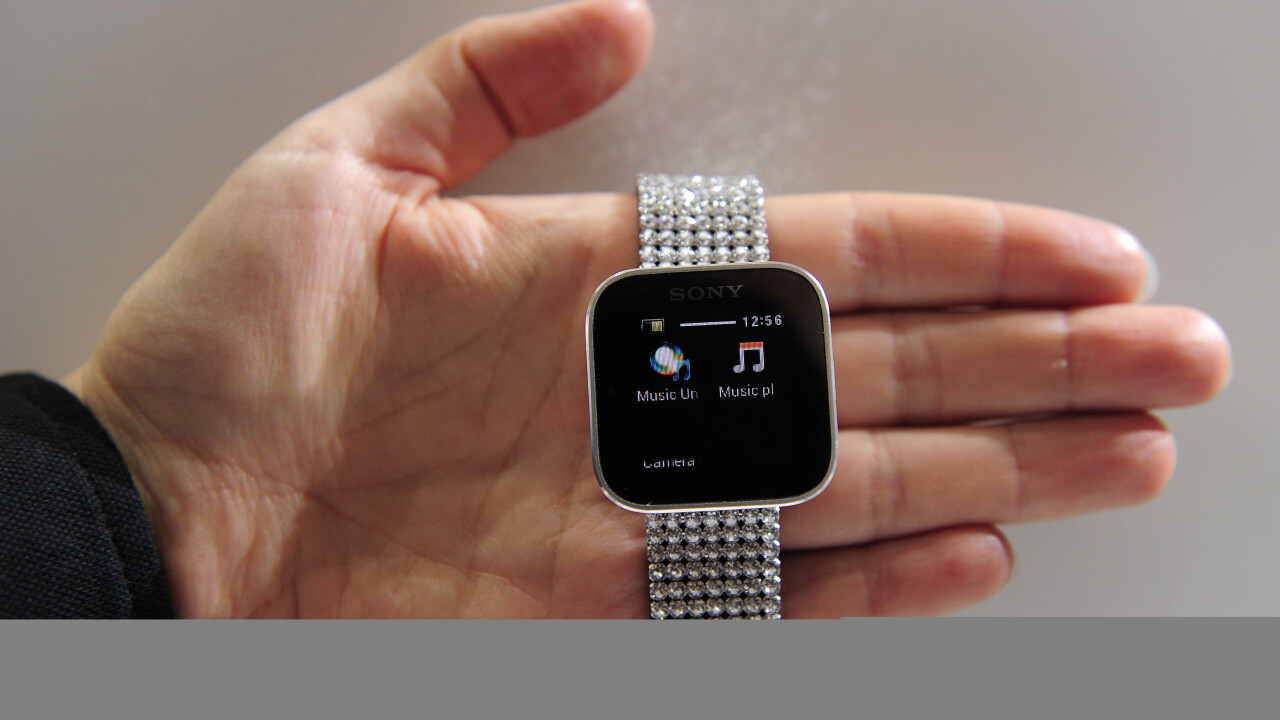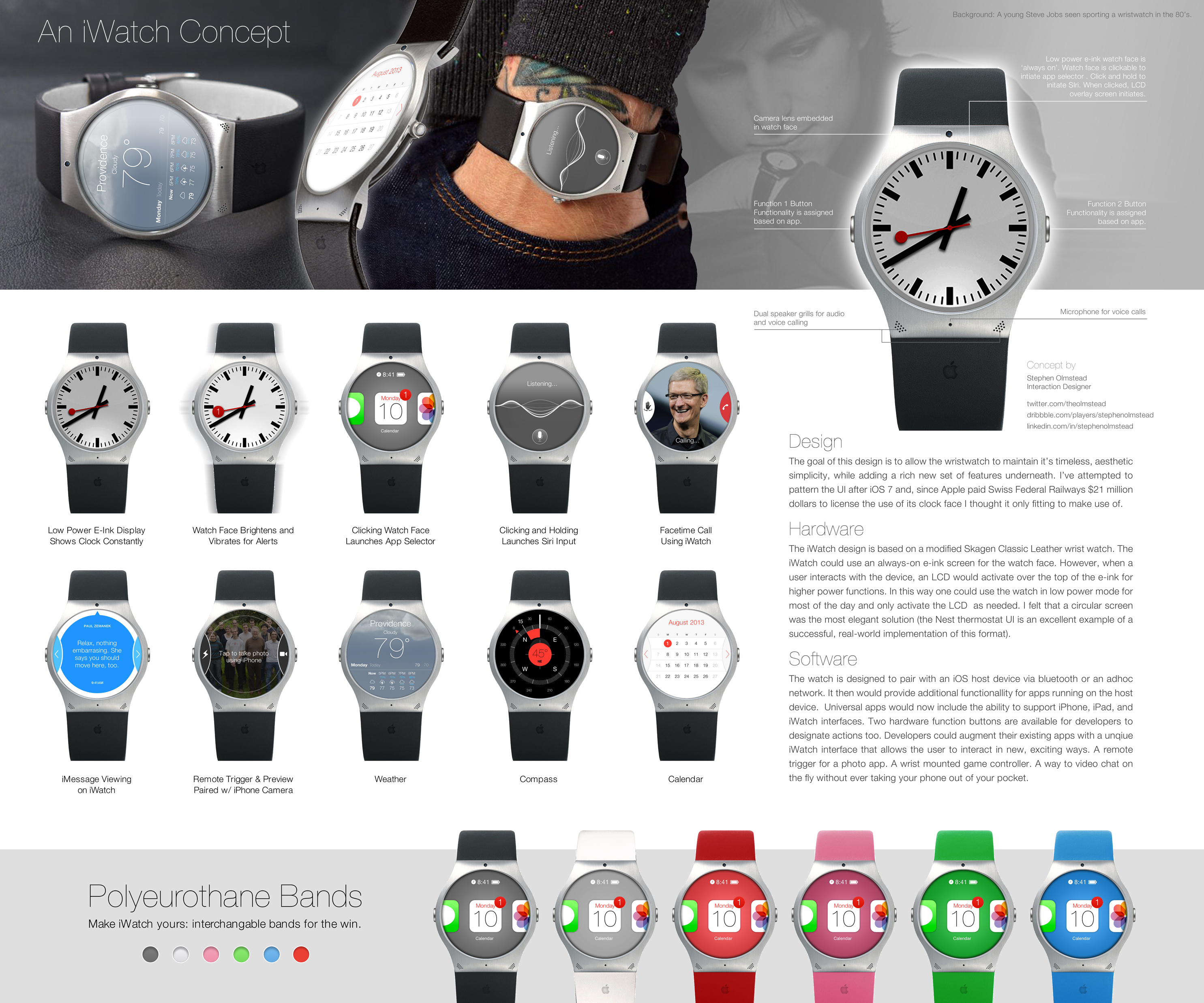
My flatmate sniggers whenever I call a gadget sexy or stylish. Are they strange words to use? Apple’s MacBook Air, the updated Nexus 7 tablet and the HTC One all look gorgeous in my opinion. In any conversation, I would happily characterize them as beautiful and attractive, so why not sexy and stylish too?
Most good-looking smartphones, tablets and laptops share subtle, but notable design traits. They’re unique to consumer electronics and have been slowly refined and embraced by the public over the last couple of decades. Deceptively thin. No unnecessary bulk or protruding edges. A glossy, edge-to-edge display. Clean lines and comfortable, rounded corners. Minimal branding.
Smartphones and tablets are relatively new product categories and as a result, we’ve all grown to accept this stylish, emerging aesthetic.
Smartwatches are different
It doesn’t matter whether it’s the Pebble, Sony SmartWatch 2, Samsung Galaxy Gear or the long-rumored Apple iWatch. All of these devices want to offer smartphone functionality in a traditional wristwatch form factor.
The problem is that wristwatches have been around for an awfully long time. We already house expectations over what they should look like and will scrutinize any new smartwatch accordingly. In short, we already hold strong opinions about what makes a wristwatch stylish.
Wristwatches have evolved into a fashion accessory too, making their appearance and stylings subjective. Some will defend a particular Rolex, Montblanc or Fossil timepiece until the end of time, while others switch between different models every six months.
It’s true that this difference in opinion also exists within the smartphone market. I’m rather fond of Nokia’s bright and colorful Lumia handsets, but my father prefers the black, clinical look of business-focused BlackBerry handsets. Unlike wristwatches, it’s easy for handset makers to create a smartphone with universal appeal, based on those underlying design traits mentioned earlier.
Originality aside, few will knock Apple’s iPhone 5 or the Sony Xperia Z based on their appearance.
These companies will find it far more difficult to create a smartwatch that’s widely accepted as being stylish. Wristwatches are designed to be worn on a daily basis, in clear sight. Just like a car or motorcycle, consumers will be looking at them multiple times a day and therefore want a device that they can truly admire and show off.
Google Glass
Glass has the same problem. I’ve been wearing spectacles for just under a decade, but I’m already very particular about their design. Admittedly, the first couple of pairs I bought were impulse decisions, mostly because I didn’t know what was available or what I really wanted.
Not surprisingly, I hated them. Hated them almost as much as the Star Wars prequels. I wore them begrudgingly, just waiting for the earliest opportunity to switch them out for anything less revolting.
These days, I know which glasses suit the shape of my face and have a treasure trove of opinions about what makes a good design. It’s entirely subjective, but it means a lot to me.
We’ve seen Glass in a variety of colors, but for now the product is locked to a single frame design. They’re not bad by any means, but they don’t strike me as being particularly stylish either. They’re just…okay.
Fancy a trade? Not likely
So if you already wear and love a wristwatch or a pair of glasses, these new wearables will give you a small dilemma. Let’s weigh up your choices:
Option one: You choose to give up your current eyewear or timepiece to experiment with this new wave of wearables and enjoy all of the innovative features cooked up by their creators. You might hate the way it looks, but at least you’re on the cutting edge of technology. Oh, and the cash you spent on your existing pair of glasses or wristwatch is somewhat redundant.
Option two: You decide to give this new generation of wearables a miss. Perhaps in the future, a design will come along that you really like. But at least for now, the benefits of the technology don’t outweigh their appearance. Your favorite Rolex or Tom Ford glasses live to fight another day.
I expect most consumers to choose option two, due to the subjective nature of what makes a pair of glasses or wristwatch stylish. There is, of course, a large group of people who currently wear neither, but a similar predicament prevails. Would you rather buy Glass or a smartwatch that you don’t really like the look of, or save your hard-earned cash for something else entirely, and just wear nothing at all on your wrist or face?
Again, I expect most people will side with the latter. The negative reaction to the Samsung Galaxy Gear prototype is a case in point.
The solution
Perhaps it’s still possible for a technology firm to create a smartwatch or Glass design with mass market appeal. I’m yet to see a concept that comes close (this recent iWatch mock-up isn’t bad) but I’m ready to be proven wrong.
Instead, designers will need to tackle the problem with customization and personalization options. Rather like the Moto X, with its hundreds of different color combinations, the trick will be to create an easy and inexpensive way to change the hardware design.
For smartwatches, that could be through different straps or digital watch faces. Anything that could make the device stylish in the eyes of the consumer. Offering a whole range of different hardware designs will be tricky, at least until smartwatches truly take off, so the original design should be incredibly simple and unassuming. Anything outlandish will simply turn off a huge portion of their target audience.
Glasses are far more difficult. The Explorer edition of Glass can actually be separated, so consumers could (at least in theory) attach it to another pair of Glass-supported frames.
Bringing on board recognized brands such as Ray-Ban will be pivotal to the success of Glass. If enough frames support the technology, consumers will be able to create their own stylish design. Plenty of rumors have been circulating about a possible partnership with (or acquisition of) Warby Parker and whether or not that actually comes to fruition, it makes an awful lot of sense.
Will wearables ever be stylish?
The smartwatches that are currently on the market haven’t made much of an impact. At least, not in the same way that smartphones and tablets have. Compelling software is part of the problem, but hardware design is a contributing factor too.
These products are in their infancy and like mobile phones, will undoubtedly improve over time. But I’m yet to hear or read a convincing argument for why I absolutely must own a smartwatch. I bought a mobile phone when they were incredibly ugly because I needed to make phone calls. I won’t buy an ugly smartwatch unless they offer the same life-changing functionality.
Unless they’re stylish, smartwatches and Glass just won’t sell.
Image Credit: JOSEP LAGO/AFP/Getty Images / FABRICE COFFRINI/AFP/Getty Images / Justin Sullivan/Getty Images
Get the TNW newsletter
Get the most important tech news in your inbox each week.








